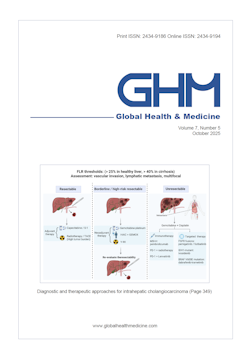Global Health & Medicine 2024;6(1):90-92.
Bloodstream infections in the elderly Japanese population: Current reality and countermeasures
Nakamura K, Hayakawa K, Tsuzuki S, Ohmagari N
We reviewed bloodstream infections in the elderly in Japan, referring to data recently reported from the National Center for Global Health and Medicine in Tokyo. We divided the locations of bloodstream infections into Hospital-onset (HO), healthcare-associated (HCA), and CA (community-acquired), as the elderly reside in different places. The study focused on the fact that the general condition and underlying diseases of the elderly differ by age group. And thus, we divided them into three groups: Pre-old (65–74 years), Old (75–89 years), and Super–old (≥ 90 years), and compared their characteristics of bloodstream infections. HO bacteremia was most common in the preold group. On the other hand, HCA bloodstream infections tended to increase as the population aged, and it was most prevalent in super-old group. According to the study results, early intervention through infectious diseases (ID) consultation may improve the prognosis of bloodstream infections even in the elderly. Since the rate of ID consultation is lower in the super-old group than in other groups, this group may be a significant target. In conclusion, a study of a cohort of elderly patients with bloodstream infections in Japan indicates that bloodstream infections in patients over 65 years is not uniform.
DOI: 10.35772/ghm.2023.01109







